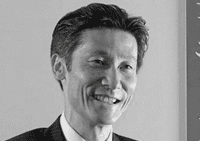
In 1980’-90’, many Japanese leading manufacturers cancelled Hoshin Kanri because it could not make the positive impact on the financial statement any more. Hoshin Kanri in English is Policy Management. They did not stop managing their policies, of course. They stopped using Hoshin Kanri method to manage their companies.
Hoshi Kanri method was born in the era of mass production. To manage the company in the single united direction was the main issue at that time. However, as the small quantity with wide variety production became dominant, a lot of trade-offs arose. The small lot production made the production leveling for higher productivity more difficult. To meet the shorter required delivery lead-time by customers made the total cost higher.
As the result of Hoshin Kanri with the typical matrix chart, only limited people and departments were working toward the same direction. Most of the other people in the company were not practically involved. Although they started the new fiscal year with Hoshin charts, a lot of unexpected changes happened during the year. They needed to change their actions immediately during the year. However, the companies could not react to the rapid changes, and lost their money.
In the changing environment, all people and departments needed to react speedily to the uncertainties to solve the trade-offs in the companies with the companywide cross functional actions. They needed to understand where would be the trade-offs, and to estimate quantitatively how much gains/losses would happen in total due to the trade-offs before starting the new fiscal year. It was more important to raise the reflexes as a company than to thoroughly implement the static policy defined in the head. Therefore, the leading Japanese manufacturers changed their management system.
How is your management system? Does it match with the current era?




